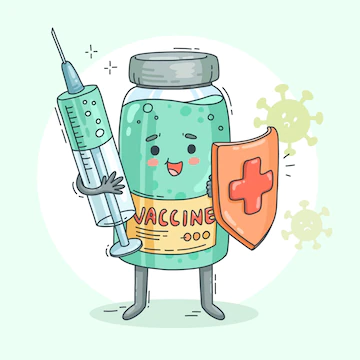
Abstract
Vaccine hesitation is a new word in the socio-medical literature that characterizes a vaccine decision-making strategy. It acknowledges that there is a spectrum between full acceptance and open refusal of some or all vaccines, and it calls into question the previous conception of individuals or groups as either anti-vaccine or pro-vaccine. Vaccine hesitation can be attributed to three factors: confidence, convenience, and complacency. The epidemiological triangle, which describes the complex interaction of environmental (i.e. external), agent (i.e. vaccination), and host (or parent)-specific characteristics, can be used to explain vaccine hesitancy. Vaccine hesitancy is a complex and dynamic issue; future immunization efforts must incorporate and address context-specific aspects in their design and evaluation. Many experts believe that addressing vaccination reluctance at the population level is the best approach. They believe it can be accomplished by increasing transparency in policy decision-making before immunization programs, providing up-to-date information to the public and health providers about the rigorous procedures undertaken before the introduction of new vaccines, and conducting diverse post-marketing surveillance of vaccine-related events.
Introduction
Vaccines are the most effective public health interventions, saving millions of lives each year. The success stories of eradicating smallpox from the world and poliomyelitis from four World Health Organization zones highlight the importance of immunization efforts. They have made significant contributions to the reduction of mortality and morbidity associated with several infectious illnesses. The success of vaccination programs is based on a high percentage of vaccine coverage. This directly protects vaccinated individuals and, indirectly, the entire community by establishing herd immunity and, as a result, decreasing the spread of vaccine-preventable diseases (VPDs).
Most affluent countries have a high rate of childhood vaccine coverage, indicating that vaccination is still a widely accepted public health policy. However, national figures can be misleading and may not reflect the true condition of under or unvaccinated areas. Several outbreaks of VPDs, including measles, poliomyelitis, diphtheria, and pertussis, have been associated with under-vaccinated or non-vaccinated communities in various parts of the developed world. The reasons for under-vaccination in the developing and industrialized worlds are diverse and have previously been studied. It has also been shown that many vaccinated people express reservations about vaccination.
Vaccine reluctance theory
The worldwide decline in public trust in vaccines is cause for alarm and a major issue for public health professionals. Researchers initially labeled the issue as “vaccine resistance” or “vaccine opposition,” but these phrases have recently been abandoned, and a new term, “vaccine hesitancy” (VH), has developed, replacing the earlier expressions, to represent the hesitation to be vaccinated. Vaccine hesitancy, according to the World Health Organization’s (WHO) Strategic Advisory Group of Experts (SAGE) Vaccine Hesitancy working group, refers to a delay in accepting or refusing vaccines notwithstanding the availability of vaccine services. Vaccine apprehension is complex and context-dependent, differing between regions and vaccine kinds. Factors such as complacency, convenience, and confidence all have an impact on it.
Vaccine complacency is known to exist in situations where the danger of vaccine-preventable diseases is judged to be minimal and immunization is not deemed necessary. Vaccine hesitation has been reported to be highly influenced by a lack of confidence in the vaccine’s safety and efficacy, as well as concerns about the health system’s dependability and competency. Furthermore, the quality of vaccination services and their convenience (e.g., physical availability, geographical accessibility, and affordability), as well as the patient’s willingness to pay, all influence the decision to be vaccinated. When vaccination services are provided, but vaccine adoption is lower than predicted, the word is beneficial. Before the working group adopted and defined this phrase, SAGE-WHO researchers utilized a variety of terms to describe this behavioral phenomenon.
Vaccine attitudes cannot be classified as anti-vaccine or pro-vaccine, as previously assumed, but rather as a spectrum between full acceptance and outright refusal of some or all immunizations. This is a complex phenomenon, with vaccine-specific difficulties requiring contextual and conceptual understanding. SAGE has also determined that, while vaccine hesitancy may exist in situations where vaccine uptake is low due to flaws in vaccine availability such as stock-outs, infeasible travel/distances to reach immunization clinics, missing vaccine program communication, or curtailment of vaccine services due to conflict, a natural disaster, or other disruption, it is not always the primary driver of unvaccinated or undervaccinated members of the population. As a result, in low uptake settings where the system. Because failure is the fundamental reason, attitudes toward vaccines cannot be split into anti-vaccine or pro-vaccine. Hesitancy may exist, but the priority is to solve the factors limiting vaccine accessibility and availability. This means that vaccination coverage estimates cannot be used to predict vaccine hesitation. Vaccination decision-making should be studied and understood in a broader socio-cultural context, according to research, because vaccination is part of a “wider social world” and its decision-making is heavily influenced by various social factors [past experiences with health services, family histories, feelings of control, conversations with friends, etc.].
